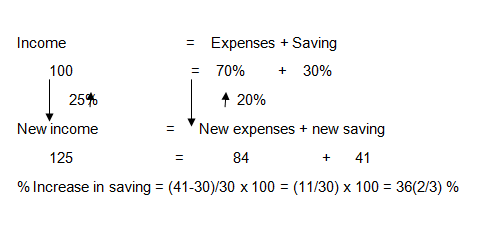Question
A man spends 70% of his income. If his income is
increased by 25% and expenditure is increase by 20%. Find the % change in saving?Solution

Which gas is commonly used to artificially ripen green fruits?
How can a mixture of sand and salt be separated?
The speed of light with the rise in the temperature of the medium :
What is the nature of the pH of milk?
Who measured the velocity of light first?
Anemometer is used to measure –
Plants absorb dissolved nitrates from soil and convert them into
Magnesium has atomic number as 12. Find out its valiancy.
Which gas is added under pressure to make soft drinks fizzy?
Anesthesia which is administered during the surgeries in the hospitals is a mixture of which of the following gases?


